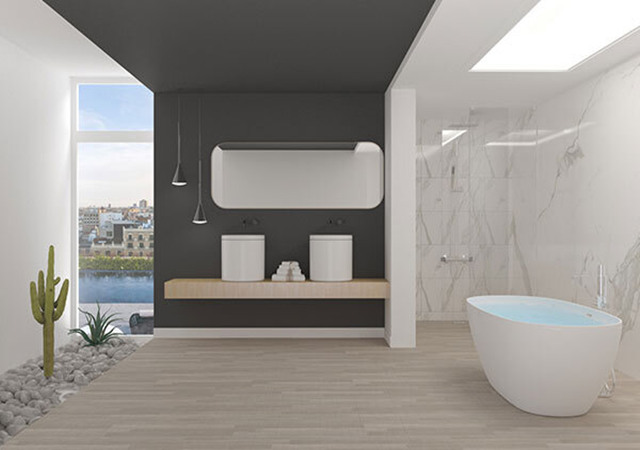
The difference between natural stone and artificial stone |
| Natural stone is mainly divided into two types in daily use: marble and granite. Generally speaking, those with texture are called marble, and those with spots are called granite. This is in a broad sense. In a narrow sense, marble refers to the stone produced in Dali, Yunnan. In fact, there are very few stones all over the country now made from Dali. The two can also be distinguished from geological concepts. Granite is igneous rock, also called acid crystalline plutonic rock. It is the most widely distributed rock among igneous rocks. It is composed of feldspar, quartz and mica. Its composition is mainly silica, accounting for about 65% to 75%. Hard and dense. The so-called igneous rocks are rocks formed by the condensation and crystallization of underground magma or lava from volcanic eruptions. The content of silica in the igneous rock, the properties of feldspar and its content determine the properties of the stone. When the content of silica is more than 65%, it belongs to acid rock. When basic minerals such as orthoclase, plagioclase, and quartz form crystals, they have a granular structure and are called granite. 
Of course, the above-mentioned marble and granite are defined in a narrower sense in the above classification. What is said on the market now is generally textured metamorphic rock, so it is also known as marble. The splotchy crystalline particles are also known as granite. In fact, too detailed classification, that is a geologist's business, for interior decoration, it is almost on the line. Of course, if your stone is used outdoors, due to the harsh environment, it needs to be classified in more detail. Because the surface of natural stone has pores, it is weak in stain resistance. Generally, it will be treated on its surface in the processing plant. In interior decoration, marble is suitable for TV countertops, window countertops, and indoor floors. Granite is suitable for thresholds, kitchen counter tops, and outdoor floors. The kitchen counter top is best to use dark granite. Some of the natural stones sold on the market are artificially processed, and these stones are generally used for about half a year to reveal their true faces. The most obvious is that the florets on the market today, many of which are dyed, are not real florets. Another thing to pay attention to is the grid on the back. There are two kinds of situations: 1. The stone itself is brittle, and a grid must be added, such as Spanish beige. 2. Cut corners, the thickness of these stones is thinned and the strength is not enough, so grids are added. Generally, if the stones with darker colors have grids, most of them are due to this factor. |
|
Next:
No more
|
 TSE wechat
TSE wechat
